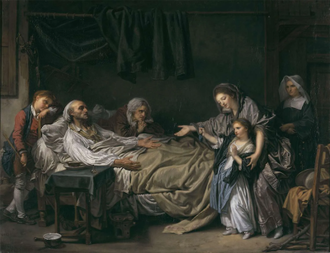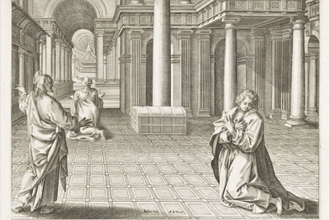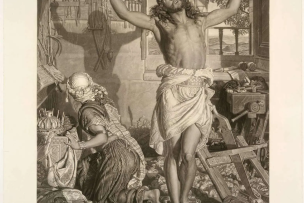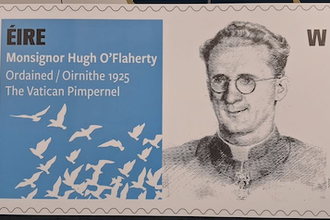Gospel in Art: And ought not this woman be healed

La Dame de Charité by Jean-Baptiste Greuze © Museum of Fine Arts of Lyon
Source: Christian Art
Gospel of 27 October 2025
Luke 13:10-17
At that time: Jesus was teaching in one of the synagogues on the Sabbath. And behold, there was a woman who had had a disabling spirit for eighteen years. She was bent over and could not fully straighten herself. When Jesus saw her, he called her over and said to her, 'Woman, you are freed from your disability.' And he laid his hands on her, and immediately she was made straight, and she glorified God.
But the ruler of the synagogue, indignant because Jesus had healed on the Sabbath, said to the people, 'There are six days in which work ought to be done. Come on those days and be healed, and not on the Sabbath day.'
Then the Lord answered him, 'You hypocrites! Does not each of you on the Sabbath untie his ox or his donkey from the manger and lead it away to water it? And ought not this woman, a daughter of Abraham whom Satan bound for eighteen years, be loosed from this bond on the Sabbath day?' As he said these things, all his adversaries were put to shame, and all the people rejoiced at all the glorious things that were done by him.
Reflection on the painting
Today's Gospel invites us to reflect on a simple but challenging question: How do we treat one another?
When Jesus healed a woman who had been bent double for eighteen years, his critics accused him of breaking the Sabbath. Yet Jesus reminds them that even they would untie an ox or a donkey on the Sabbath to lead it to water. If compassion for animals is permitted, how much more should compassion for a suffering human being be welcomed? The Sabbath was never meant to restrict mercy, but to make space for it.
For Jesus, there is no "wrong" moment to do good. There is no day too sacred or no rule to rigid, to silence love for our neighbour. Healing and helping one another are in themselves acts of worship.
Our painting depicts charity for our neighbour in the most literal form. We see a well to do lady bending tenderly over her children towards a an older man who is in bed. The aged man, frail and infirm, reaches for her hand. There are no theatrical gestures in this painting, only expressions of compassion made visible. The quiet domestic setting reinforces that this is not a grand allegory, but a deeply human moment of neighbourly love. Jean-Baptiste Greuze always sought to blend moral instruction with realism. He intended here for Charity to move the viewer's heart, not by spectacle, but by seeing virtue lived in everyday gestures. The holy is found in our daily acts of kindness, justice, and mercy.
LINKS
Gospel in Art: https://christian.art/
Today's Reflection: https://christian.art/daily-gospel-reading/luke-13-10-17-2025/


















